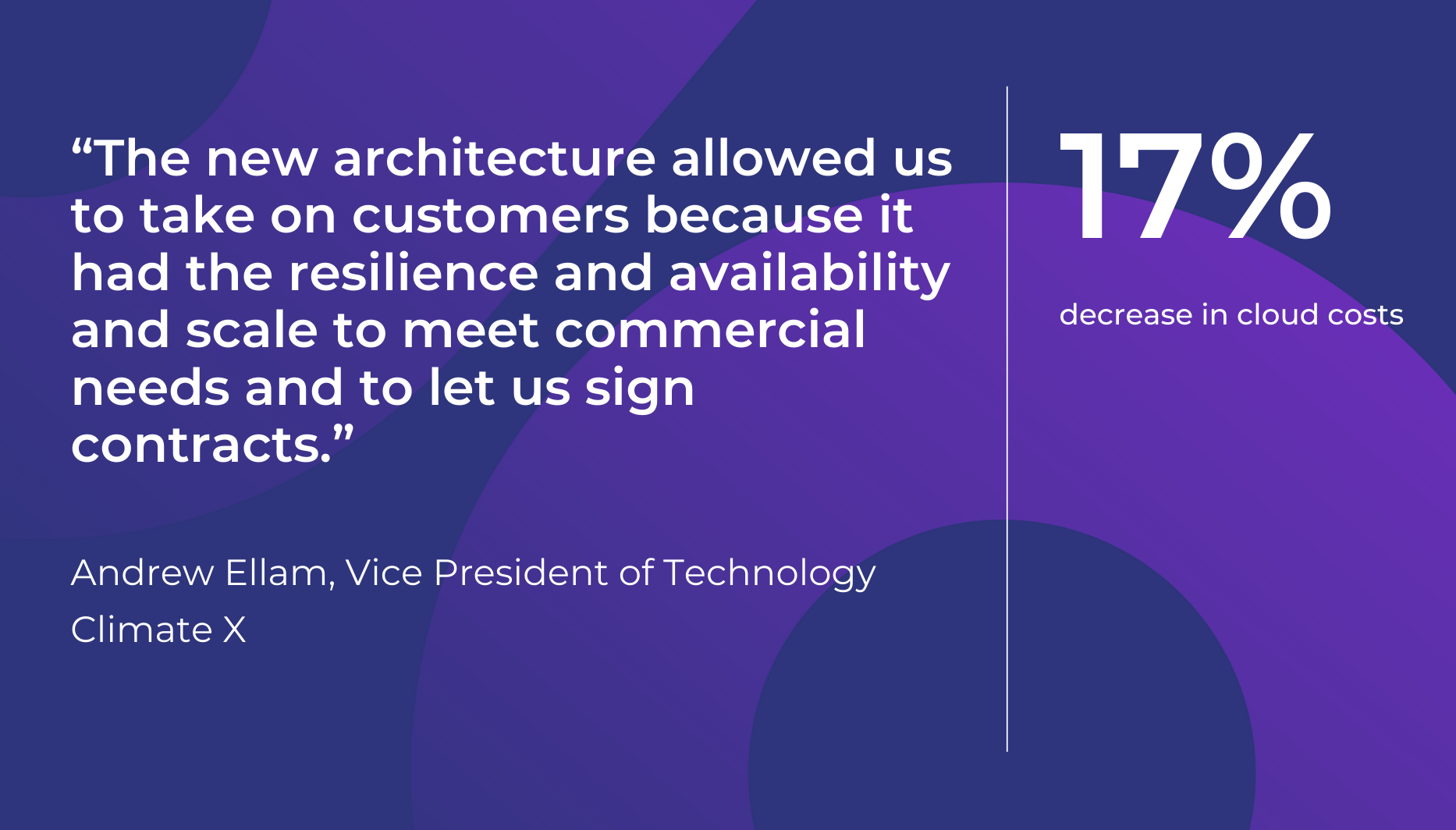
20 Minutes: Turning cloud savings into news innovations
20 Minutes reassigns two full-time engineers to new projects with the help of DoiT
Automatically manage cloud compute for optimized costs and agility
Make sense of spend and chargeback to align with your business

Optimize BigQuery costs with actionable recommendations and usage insights
Maximize AWS Spot savings and minimize disruptions for optimized scaling
Autonomously identify cost spikes early, with zero configuration

Ingest third-party data to see combined analytics in a single pane of glass.
Organize your billing data for better business decisions
Connect your favorite tools to DoiT’s products
Learn how we’re redefining support with our customer reliability engineering
View our live support and customer satisfaction statistics in real-time
Proven solutions to cloud complexity
A global team of committed cloud experts with decades of experience in cloud architecture, Kubernetes, machine learning and much more
Learn how DoiT enables critical FinOps capabilities
DoiT Accelerators give you the dedicated cloud expertise and resources to quickly adopt new cloud services and build production-ready workloads with them.
Implement end-to-end Gen AI solutions into your product with Amazon Bedrock and more
Accelerate new EKS deployments
Develop a production-ready, modern data platform on AWS
Implement end-to-end Gen AI solutions into your product with Vertex AI and more
Accelerate new GKE deployments
Develop a production-ready, modern data platform with BigQuery and beyond

Proud to be an award‒winning multicloud partner to top‒tier cloud providers

Enabling cloud growth and unlocking revenue through expert partnership

Accelerate new customer growth and Marketplace integration on AWS and GCP
Read the latest insights, tips and perspectives from our team of cloud experts
See how we’ve helped thousands of public cloud customers achieve their goals
Listen to our experts and customers share tangible tips for navigating the cloud.
Tech talks and interactive expert sessions delivered both virtually and in person
Discover foundational expertise and future-ready recommendations for the cloud
See what's new from DoiT in our latest news and announcements
Watch product demos, interviews and more from our cloud experts
Browse our open positions and learn more about what it takes to be a Do’er
Meet the team leading DoiT and our customers on a journey of hypergrowth
See what's new from DoiT in our latest news and announcements


Climate X, founded in 2020 and based in London, provides climate risk data and analytics to help organizations become more resilient by quantifying the probability and severity of weather events at an asset level, decades before they happen. Its Spectra offering is an enterprise-wide solution serving service retail, wholesale, risk, and finance teams in the banking and real estate industry through one platform, and as one provider.
Before it could launch its Spectra platform to help organizations assess location-specific climate risks, Climate X needed to update its cloud architecture to support the data-intensive needs of the large and growing number of customers the company expected. Amazon Web Services (AWS) recommended that it work with AWS Partner DoiT International, which conducted an AWS Well-Architected review of the company’s infrastructure and worked with Climate X to rebuild for greater availability and scalability.
Preparing to Move from Product Demo to Full-Featured Commercial Offering
Founded in 2020 and headquartered in London, Climate X provides an analytics platform called Spectra that helps organizations assess location-specific risks and financial impacts related to climate change. Because the first version of its platform was more of a demo than a complete product, the company knew that it needed to update its cloud architecture before officially launching its commercial offering. It had started making some improvements but wanted additional support.
With its foundation already built on AWS, Climate X asked AWS for help and was referred to AWS Partner DoiT International, a global technology company with multicloud expertise for digital-native businesses. Climate X decided to work with DoiT to conduct an AWS Well-Architected review of its existing infrastructure, which would help it to learn, measure, and build using architectural best practices. It then planned to make improvements suggested by the review and grow its existing in-house IT knowledge and skills.
By working with a AWS Partner, Climate X also hoped to gain access to additional AWS financial incentives to help build its business. The two companies began working together in late 2021 and by the spring of 2022 had completed the AWS Well-Architected review. At that point, the early version of Climate X’s platform was being used by only a limited number of investors and some of those investors’ prospective partners. “We were still working toward a minimum viable product at the time, and we realized that if we were going to rearchitect, it needed to be before a flood of clients reached our platform,” says Aatish Thakerar, head of data engineering at Climate X.
Rebuilding for Improved File Handling and Future Microservices Support
Thanks to the work of its global team of AWS experts, DoiT’s review identified a number of areas where Climate X’s architecture could be improved to deliver a high-performing and scalable infrastructure to support the organization’s growth ambitions. One issue was related to Climate X’s use of comma-separated values (CSV) files, which store data records in plain text, for processing data inputs from users and returning outputs back to users. This limited the company’s choices around other file types and also restricted the architectural options available to it. “It was very easy to set up with that file type, but it was fairly limiting later on because it just took longer to process,” says Thakerar. Climate X had also been working to convert its geospatial data to a format that would be easier for its science team to use, but those efforts also had knock-on effects on other parts of the company’s architecture.
Those issues helped determine how to best redesign Climate X’s platform based on the recommendations of the AWS Well-Architected review. “It was more of a revolution than an evolution at that stage,” says Thakerar. “We actually built the new architecture around the change in file type.” The redesign wasn’t a full microservices-based architecture, he says, but it could support microservices in the future. And it involved building different services for different kinds of data processing, with separate modules for handling client authentication, processing customer requests, load-balancing traffic, and reading geospatial data.
Climate X also moved from a single large database instance to Amazon Aurora, which provides built-in security, continuous backups, and serverless compute. That change provides a smoother scaling process for Climate X, Thakerar says.
New Levels of Availability and Scalability, with Cost Savings of 17%
By the middle of 2022, Climate X had an updated cloud architecture that could support the rollout of a full-feature version of Spectra to paying customers. It continues to work with DoiT on additional improvements and, thanks to that collaboration, expects that its current setup will be able to accommodate user demands for the next 18–24 months. “It’s more of an evolution now,” Thakerar says. And throughout this process, he notes, DoiT has been quick to respond to any requests for support.
Climate X first introduced its updated Spectra platform in the UK before then rolling it out to other parts of Europe, the US, Canada, and parts of the Asia-Pacific region. “The new architecture allowed us to take on customers because it had the resilience and availability and scale to meet commercial needs and to let us sign contracts,” says Andrew Ellam, vice president of technology at Climate X. He adds that DoiT was particularly helpful when it came to finding the right solution for data storage, helping to replace Amazon Elastic Block Store (Amazon EBS) with Amazon FSx for Lustre, which provides fully-managed shared storage built on the world’s most popular high-performance file system.
With its improved scalability, Climate X is working to add more granularity and detail to the geography-specific data it provides to customers—for example, coastal flooding data is now provided at a resolution of 30×30 meters, compared to the previous resolution of 90×90 meters. “That’s 9 times as much data for each tile,” says Thakerar. And now that its research team is using AWS Parallel Cluster to deploy and manage high-performance computing clusters, Climate X knows that it pays only for the compute capacity it needs, when it needs it, and can manage more than 2 trillion data points. That, combined with DoiT Flexsave—which automates spending on Amazon Elastic Compute Cloud (Amazon EC2) for secure and resizable compute capacity—has helped to reduce IT costs by 17 percent. DoiT has also helped Climate X to build a strong relationship with AWS, which has led to additional benefits such as receiving an AWS climate grant. “It’s been very, very useful and given a massive boost to the business,” says Thakerar.

20 Minutes reassigns two full-time engineers to new projects with the help of DoiT

Discover how Candid accelerated success with DoiT’s expertise. From optimizing AWS costs to enhancing cloud infrastructure, DoiT helped Candid innovate and thrive in dental care.

Leanspace pioneers modular satellite operations solutions, partnering with DoiT for cost optimization and infrastructure efficiency to propel its growth and innovation.
From cost optimization to cloud migration, machine learning and CloudOps,
we’re here to make the public cloud easy.
Ready to get started?